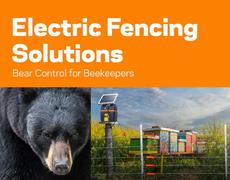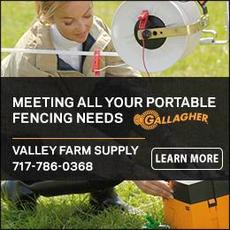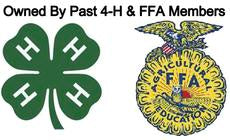Those of us who pasture livestock - whether one 4-H horse or hundreds of beef cattle - are in reality, grass farmers. We raise and care for grass plants which are then harvested by our animals. That grass plant’s health, and ultimately the soil’s water and mineral cycles, are directly related to the type and duration of grazing we allow. Notice I say “we allow.” If your critters are dictating how you let them graze, there is a better way!
Grasses have evolved over eons in a direct response to grazing. In fact, grass needs grazing, fire, or some other type of removal to survive. It is one of the few plants whose growth point is located in its base, and not the top. Most other plants, shrubs and trees growth points are located at their top, and if you remove it, their growth pattern is severely altered. They tend to stool out or even curtail growth entirely. Not so with the grass plant. It’s built to not only survive grazing, but thrive with it, if managed properly.
Let’s examine what happens to an individual grass plant when grazed. This plant has one mission in its life, and that is to reproduce by going to seed. Most grasses stop or radically slow their growth when they head out and produce seed. But, as long as soil and moisture conditions are favorable, this plant will continue growing and attempting to produce that seed every time it is grazed. The key is rest; the recovery period between grazings. If the plant is grazed a second time too quickly, before the leaf area is large enough to support growth, it has to dip into its root reserves, and the plant’s health and production declines. This is actually a good definition of overgrazing: Biting an individual grass plant a second time, before it has had adequate time to recover from the first bite. Giving that plant a little time between bites will build root mass, leaf production, and boost plant vigor. If you don’t, the results are dwindling roots, slower leaf growth, the inability to recover from grazing, and lots of bare soil.
Do you know any good examples of this scenario? How about your lawn? Is it thicker and fuller than your pasture? I bet it is because you’re “harvesting” it by mowing it regularly all summer! You can do the same with your pasture by changing from season-long grazing to “rotational” or “intensive” grazing.
The easiest way to subdivide your pasture into paddocks and begin rotational grazing is with modern electric fencing. Portable electric polywire can let you match the speed of your rotation to the growth of the plant. This is a critical step because grasses grow faster in the spring when soil moisture peaks, and then slower for the remainder of the hotter and drier summer season.
It’s critical to rotate “fast during fast growth, slow during slow growth.”
Think about this for a minute. If the objective is to graze the plant once, then rest it adequately so growth can resume without dipping into its root reserves before it is bitten again, that’s a rule that stands to reason. A plant that is actively growing will recover faster than one that is in the slower summer growth phase.
During the winter, plants are not actively growing and grazing will not hurt root reserves because they’re dormant. Grazing can be beneficial as it removes old leaf matter and clears the way for a fresh start for the plant come spring.
So, what benefits will you realize from rotational grazing?
Tighter plant spacings.
Improved soil fertility.
New plants started by hoof action.
Faster manure breakdown.
Less fly and pest bother.
Higher production (meat, milk, wool, etc.) per acre.
Stockpiled grass for winter grazing – less hay expense!
Many people report the ability to graze their animals at twice the normal stocking rate per acre, or more. You can get started with rotational grazing with an inexpensive electric fence from Gallagher.





